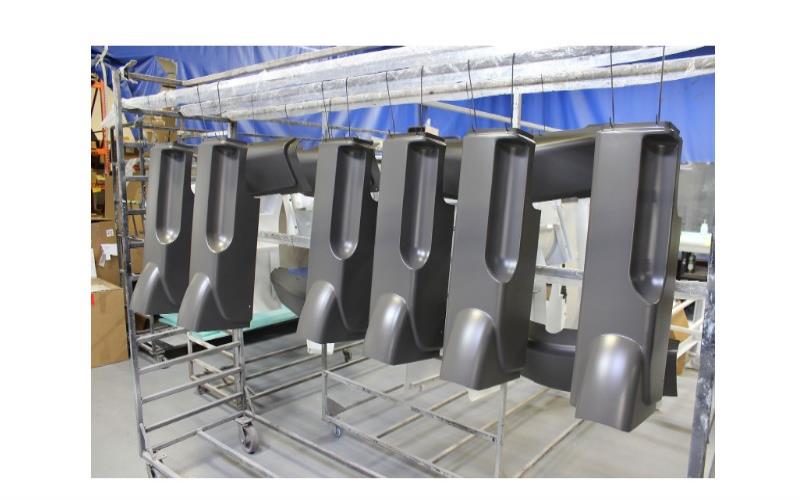Thermoforming, a versatile manufacturing process, relies heavily on the selection of suitable thermoplastic materials to achieve desired product characteristics and performance. In this comprehensive guide, we explore the diverse range of materials commonly used in thermoforming, their properties, applications, and considerations for selection.
Introduction to Thermoforming Materials
Thermoplastic materials are widely utilized in thermoforming due to their ability to become pliable when heated and solidify into a desired shape upon cooling. The choice of material depends on factors such as mechanical properties, chemical resistance, aesthetic requirements, and cost considerations.
1. Polystyrene (PS)
Properties: Polystyrene is characterized by its clarity, rigidity, and affordability. It is available in various grades, including general-purpose (GPPS) and high-impact (HIPS), with HIPS offering enhanced impact resistance.
Applications: Polystyrene is commonly used in packaging, disposable cups, trays, and cosmetic packaging due to its excellent clarity and affordability.
Considerations: While polystyrene offers good clarity and affordability, it may lack the impact resistance required for certain applications, necessitating the use of high-impact grades for increased durability.
2. Polyethylene (PE)
Properties: Polyethylene is known for its excellent chemical resistance, flexibility, and toughness. It is available in various forms, including low-density polyethylene (LDPE) and high-density polyethylene (HDPE).
Applications: Polyethylene is used in a wide range of applications, including food packaging, medical packaging, automotive components, and recreational equipment, due to its flexibility, impact resistance, and chemical inertness.
Considerations: Polyethylene offers excellent chemical resistance and flexibility but may exhibit lower tensile strength compared to other materials, requiring consideration of application-specific requirements.
3. Polyvinyl Chloride (PVC)
Properties: Polyvinyl chloride is valued for its excellent chemical resistance, durability, and flame retardancy. It is available in rigid (RPVC) and flexible (FPVC) formulations, with FPVC offering enhanced flexibility.
Applications: PVC is commonly used in signage, medical packaging, consumer goods, and construction products due to its durability, chemical resistance, and flame retardancy.
Considerations: While PVC offers excellent chemical resistance and durability, it may emit toxic fumes when heated, necessitating proper ventilation and safety precautions during thermoforming.
4. Polypropylene (PP)
Properties: Polypropylene is characterized by its lightweight, high chemical resistance, and excellent heat resistance. It is available in various grades, including homopolymer and copolymer formulations.
Applications: Polypropylene is used in automotive parts, food packaging, medical devices, and household products due to its lightweight, heat resistance, and chemical inertness.
Considerations: Polypropylene offers excellent chemical resistance and heat resistance but may exhibit lower impact resistance compared to other materials, requiring consideration of application-specific requirements.
5. Acrylonitrile Butadiene Styrene (ABS)
Properties: ABS combines the strength and rigidity of acrylonitrile and styrene with the toughness of butadiene, offering excellent impact resistance, dimensional stability, and surface finish.
Applications: ABS is used in automotive interior components, consumer electronics, appliances, and toys due to its excellent impact resistance, dimensional stability, and surface finish.
Considerations: While ABS offers excellent impact resistance and surface finish, it may exhibit higher material costs compared to other materials, requiring consideration of cost-effectiveness for large-scale production runs.
Conclusion
Thermoforming offers manufacturers a versatile manufacturing process for producing a wide range of products across industries. By understanding the properties, applications, and considerations of various thermoplastic materials commonly used in thermoforming, manufacturers can make informed decisions about material selection to meet their specific requirements for performance, aesthetics, and cost-effectiveness.
Whether it’s the clarity and affordability of polystyrene, the flexibility and chemical resistance of polyethylene, the durability and flame retardancy of polyvinyl chloride, the heat resistance and chemical inertness of polypropylene, or the impact resistance and surface finish of acrylonitrile butadiene styrene, thermoforming materials offer a spectrum of options for creating innovative and high-quality products that meet the demands of today’s marketplace.

